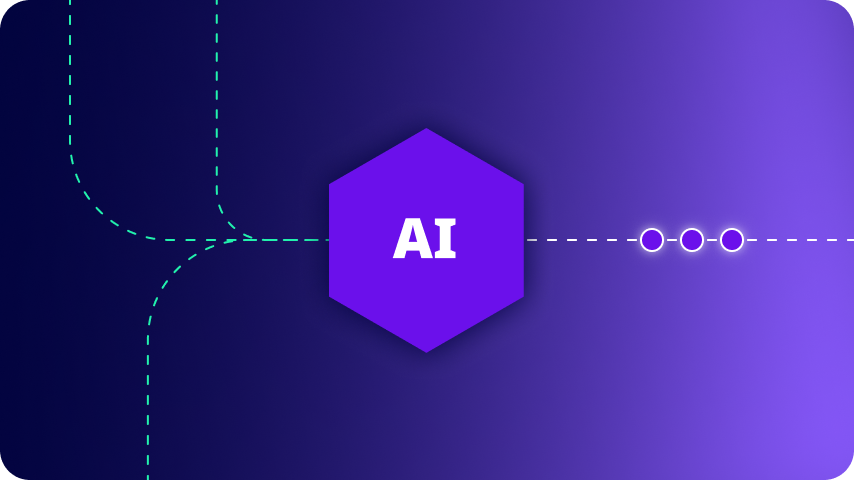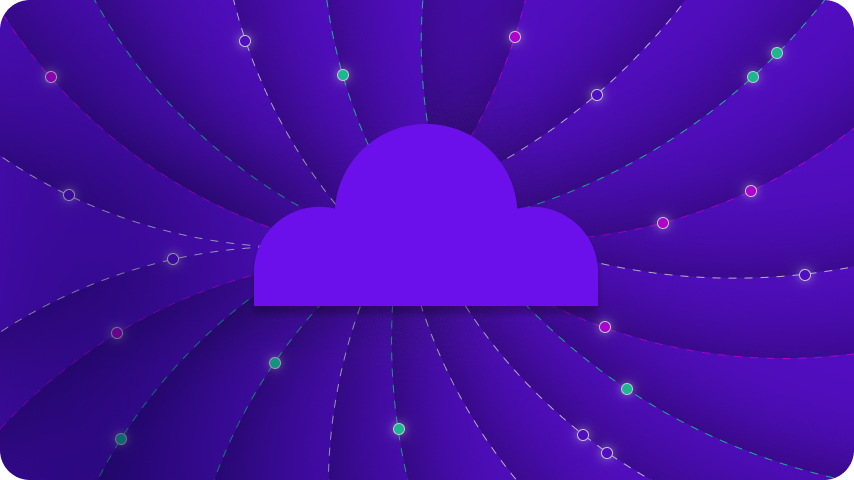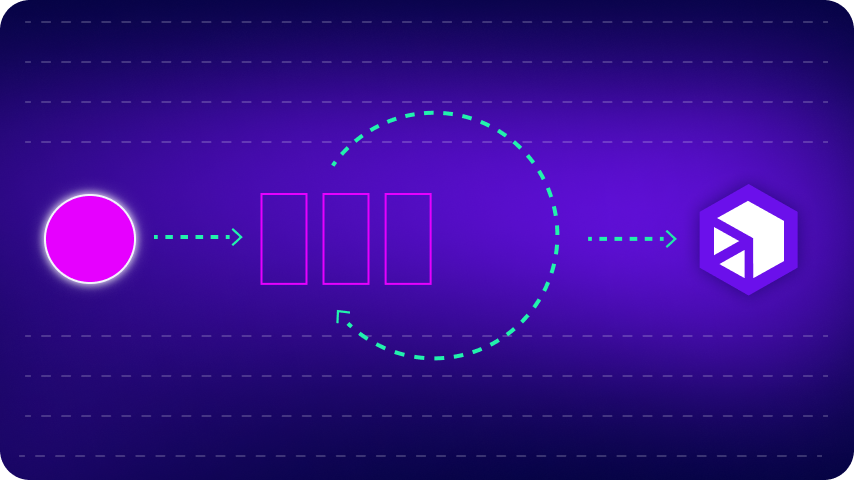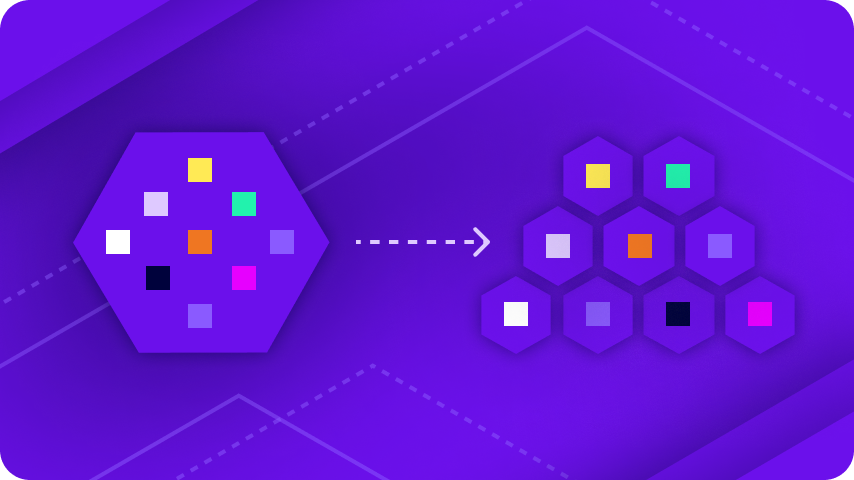January 8, 2024
Artificial intelligence has commanded the lion’s share of enterprise technology headlines in recent years. And rightly so. For many companies, AI has fast-tracked meaningful advances such as automation, robotics, and big data analytics—helping to reinvent how businesses do business.
The IT team is no exception. For example, the automation by AI of code generation and testing to expedite what was time-consuming, hands-on work. Yet some critical IT components remain resistant to change, impeding the company from innovating at scale.
When technology gets in the way
Every enterprise strives for an agile and flexible business model, one that relies on technology to cultivate growth and profitability, while seamlessly adjusting to changes in the market. The upside is undeniable, providing the business with a composable IT environment that opens access to new audiences and market segments.
Yet for many organizations, the way forward is blocked by the very technology meant to enable progress: integration platform-as-a-service (iPaaS). Rather than supporting innovation, integration is mired down by monolithic architecture that constrains how the company grows.
Despite this, too often organizations don’t do anything to address the situation, accepting the limitations of the iPaaS in play as a necessary evil. The effort to transition to a contemporary iPaaS, especially the migration of existing integrations to the new platform—is deemed too time- and resource-intensive, forcing IT to endure the status quo.
But what if it wasn’t? What if you could migrate existing integrations to a modern, serverless, composable platform that easily scales with the changes of your business?
Welcome to Digibee. A modern iPaaS purpose built to enable and empower integration architects and developers. In this blog post, we explore our new AI-powered integration migration capabilities, designed to unlock the potential that has been contained by legacy, monolithic platforms.
Migrating existing integrations from a legacy product
When transitioning to a new iPaaS, the migration of existing integrations has never been a straight-forward exercise. This is due to two factors:
- Interoperability between platforms: Until recently, there was no discernable difference between integration technology vendors to warrant investigating interoperability. The upside of change wasn’t quantifiable enough to warrant the effort of migrating integrations.
- Vendor self-interest: Legacy technology vendors prefer to lock in customers to protect their market share, forcing companies to innovate at the pace of the vendor versus the business.
Most companies have little choice but to remain with their legacy integration product. As a result, the business never achieves its true potential, mired down by ever-growing IT backlogs, frustratingly slow development cycles, and the high costs of working with an outdated platform.
For Digibee customers, this makes no sense. Why limit the innovative capabilities of the technology enterprises rely upon most to grow the business? The right integration solution can enable innovation, rather than impede it.
AI-powered integration importing
Digibee’s first if its kind AI-powered integration importing feature allows companies of all sizes to easily transfer existing integrations to Digibee’s contemporary iPaaS, simplifying and automating needlessly complex work.
With Digibee, there is no need to go back in time to revisit original code, search for documentation, and rewrite integration maps. Instead, AI-automated workflows seamlessly translate legacy integrations into JSON files with a single click.
The capabilities of the integration importing feature include:
- Translator tool: Create a JSON file by copying and pasting integration code from the legacy product
- Exception handling: The flow works even if a fragment of the integration is not properly translated, with the system producing a log for the user in real-time, flagging any inconsistencies.
- AI-generated flow documentation: Original and migrated integration flows are documented so users can easily audit and fix any inconsistent fragments. External connections are identified within the integration flow.
- Web interface: The UX is flexible and accessed via URL with authentication protocols
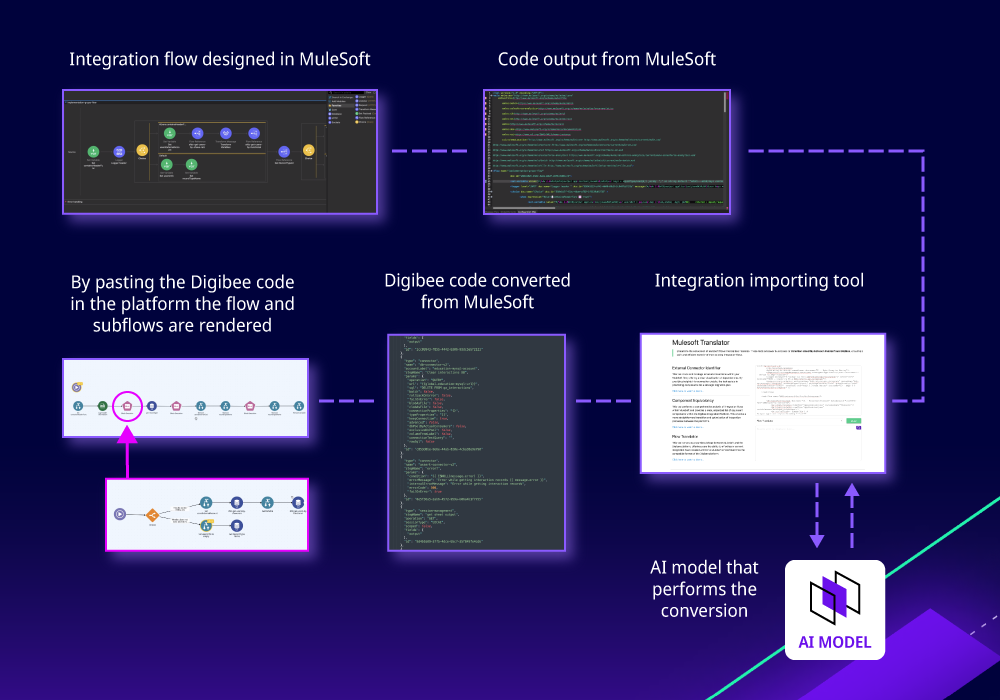
The Digibee difference
Traditionally, integration migration requires a detailed analysis of business goals including understanding how the ecosystems were integrated within the legacy environment.
But without accurate documentation and firsthand domain knowledge of the previous system, complexity–and time–increase exponentially. Often this is the stumbling block that impedes many enterprises from evolving to a modern iPaaS.
Digibee’s AI-powered integration importing feature obviates the need for any of the minutia around the legacy product. Instead, the technology reads the integration flow directly from the legacy product with no need for developers to produce documentation and integration maps.
The flow is seamlessly recreated in the Digibee Integration Platform for a real-time “lift-and-shift” migration. The recreated integrations are exact and can be easily modified and optimized within the Digibee system.
Next steps with Digibee
The Digibee integration importing feature is available now to all MuleSoft customers modernizing to the Digibee Integration Platform. Next versions of the feature will incorporate offerings from other legacy integration vendors.
The feature is free of charge to all Digibee customers. Contact your Digibee account manager and / or sales engineer for next steps, or talk to our team to learn how Digibee can help your business.





